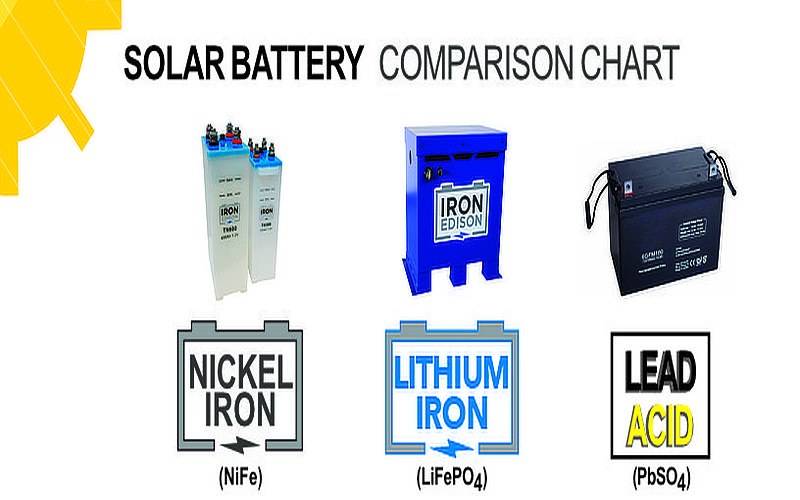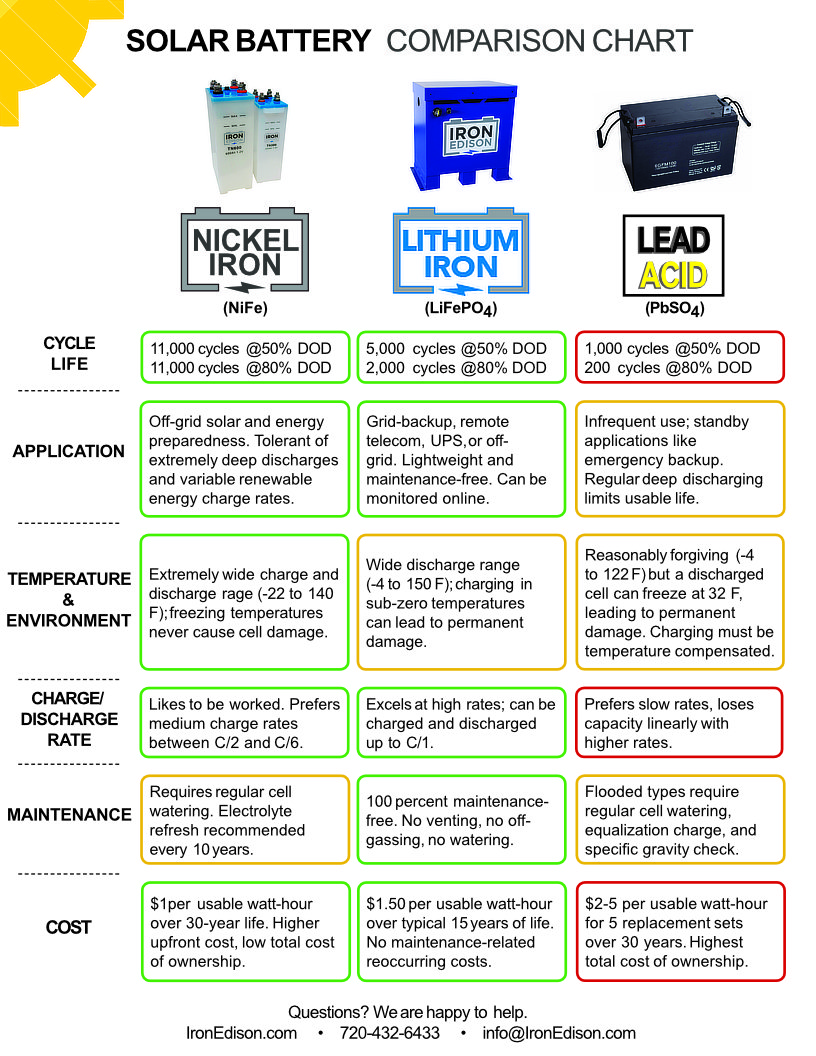Solar Battery Chemistry Comparison Chart | Best For Off-Grid?


What is the best battery for solar storage?
Lets take a quick look at three battery chemistries. Lead acid, Lithium Iron, and Nickel Iron.
I found a nice comparison chart (below) on IronEdison.com – who specializes in Lithium Iron and Nickel Iron batteries for energy storage applications.
Which Off-Grid Battery Chemistry Costs Less?
In short, when comparing the battery chemistry type regarding the money, lead acid will cost less up front. But in the long run it will cost the MOST.
The least expensive battery chemistry for the long haul is evidently nickel iron type batteries. Though some regular maintenance is required (regular cell watering – like flooded lead acid batteries).
With that said, I really like the lithium iron battery. Although it is a bit more expensive than nickel iron, it’s a lot cheaper than the lead acid type over the long run. Best of all, there’s zero maintenance required. Ever.
The Best and the Worst
Looking at the comparison chart, the worst factors come from the lead acid battery column. Low number of lifetime cycles (~1,000 at 50% depth of discharge). And very high cost over the long run due to having to replace the battery bank comparatively often.
Some of the best factors come from lithium iron AND nickel iron.
Lithium iron batteries require NO MAINTENANCE. This can be a huge factor. There’s also no venting or off-gassing. Therefore no special battery room requirements in this regard.
Nickel iron batteries have a very high cycle lifetime. Up to 30 years (11,000 cycles) at 50% depth of discharge.
Iron Edison Battery Comparison Chart

The Takeaway
5 – 7 Years
Lead acid type batteries may be good for relatively short term battery storage applications (several years, or maybe up to 5-7 if you’re careful with the battery bank and use low depth of discharge every day). But then you will have to dispose of that bank and replace all the batteries if you want to keep the system going…
Cha-Ching goes the cash register. (Remember when they used to make that noise? – showing your age…)
10 – 15 Years
When you’re considering 10 – 15 years for an off-grid battery storage, then Lithium iron would be my personal preference.
Why? Because I wouldn’t have to deal with changing out a HEAVY battery bank in 5-7 years. And they’re maintenance free (and lighter, less space requirements).
20 – 30 years
The nickel iron battery chemistry will cycle up to 30 years @ 50% DOD. And this type of battery storage will be the least expensive over that period of time.
However there is regular maintenance required. That may be fine for some people. But maybe not for others. If it were me, and I could afford the extra for Lithium Iron, that’s what I would do. Not because I can’t do the maintenance, but the peace of mind not having to remember doing it all the time ;)
Hopefully this will help someone who may be searching the internet for such a battery comparison chart.
Note: IronEdison.com is a sponsor on this site. They distribute the batteries mentioned above, and are located in Colorado. Give them a call or send an email if you have any questions about batteries!
Continue reading: 8 Advantages of Lithium Iron Batteries for Off-Grid Energy
